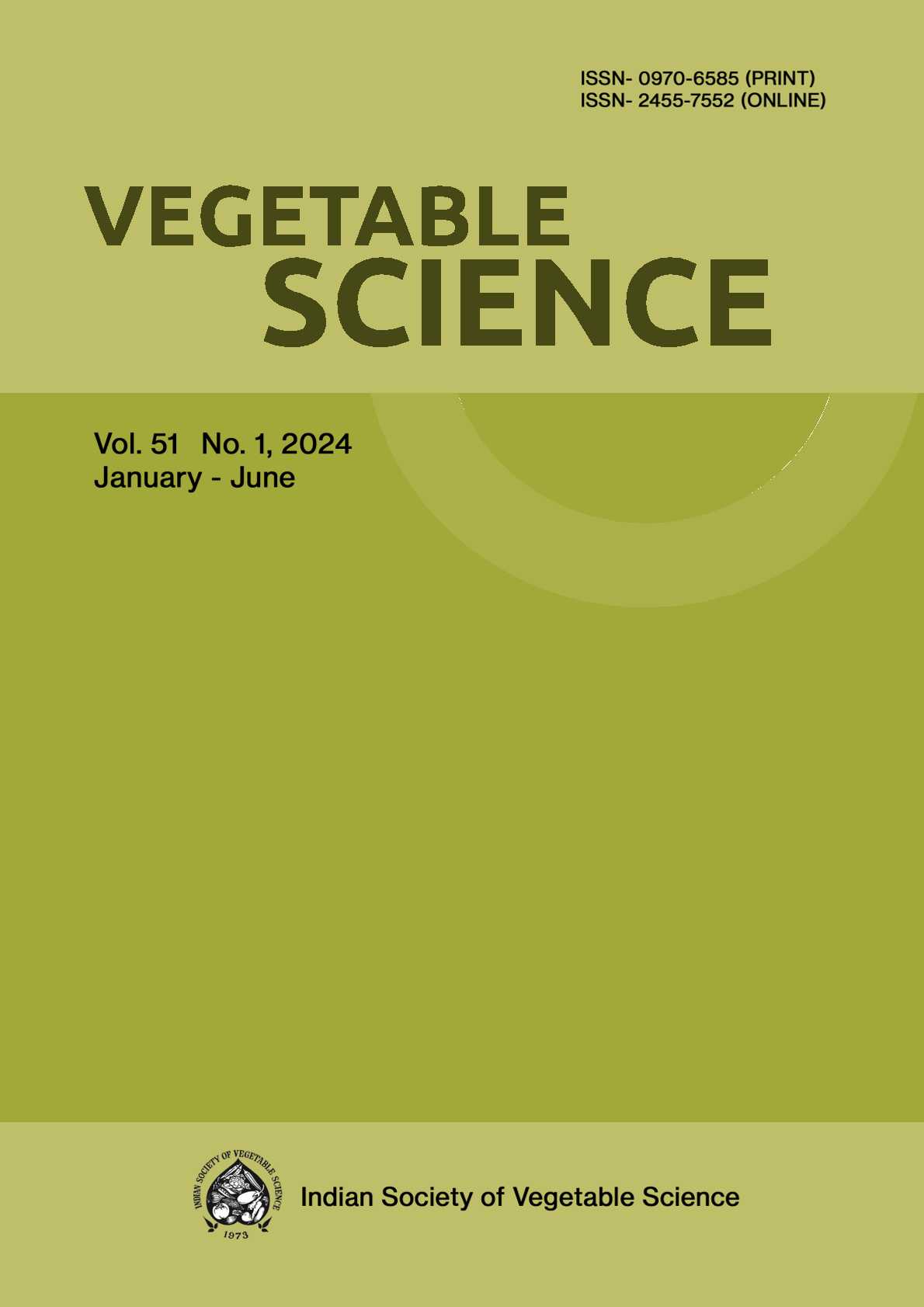Genetic architecture of yield and its components in brinjal (Solanum melongena L.)
DOI:
https://doi.org/10.61180/Keywords:
combining ability, gene action, heterosis, yieldAbstract
A field experiment “Genetic architecture of yield and its components in brinjal (Solanum melongena L.)” was carried out comprised of 10 parents, 45 hybrids (produced through half-diallel mating design) and commercial hybrid ABH-1 as a check during 2014-15, at Regional Horticultural Research Station, Navsari Agricultural University, Navsari. The data were obtained for sixteen traits including fruit yield. The analysis of variance for all the traits revealed that parents were found to be significant for all the traits studied indicating presence of considerable amount of genetic variability in the parental material tested. IC 074224 x IIHR 635 (60.69), Surati Ravaiya Pink x Arka Neelkanth (58.81) and IIHR 635 x Arka Neelkanth (55.08) showed significant and desirable heterobeltiosis for fruit yield. Combining ability studies revealed non additive type of gene action involved in the expression of traits. IC 074224, Punjab Barsati and IC 11066-2 were good general combiners for fruit yield per plant. The ratio of gca variance/ sca variance were observed less than unity for all the characters which revealed the predominance of non-additive gene action. The overall analysis based on gca effect, sca effect, heterobeltiosis and standard heterosis revealed that parents IC 074224, IC 11066-2 and IIHR 635 and crosses IC 074224 x IC 11066-2, Surati Ravaiya (Pink) x Arka Neelkanth and IIHR 635 x Arka Neelkanth found promising for future breeding programme. Biparental mating with reciprocal recurrent selection would be appropriate to maintain the required genetic variability in breeding population and at the same rise the frequency of desirable genes. Top ranking hybrids may be further tested for area locations identifying for high yielding hybrids
Downloads
Published
Issue
Section
License

This work is licensed under a Creative Commons Attribution-NonCommercial-NoDerivatives 4.0 International License.






